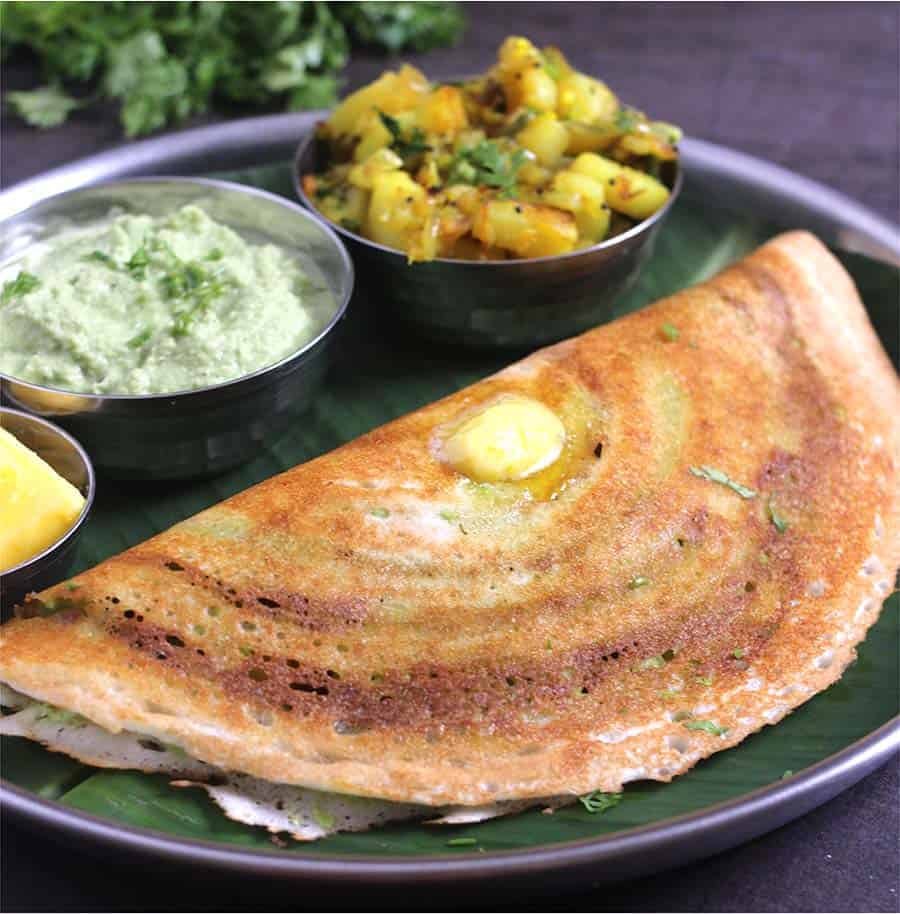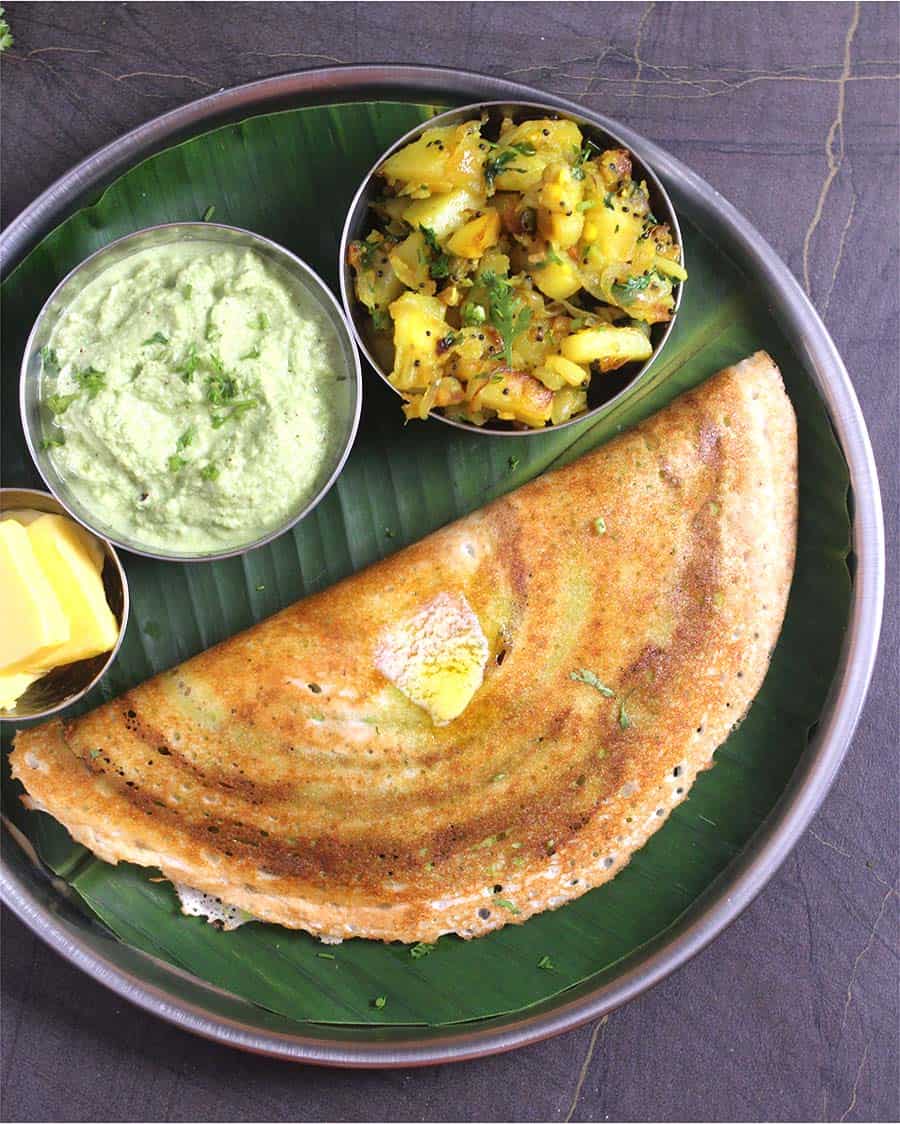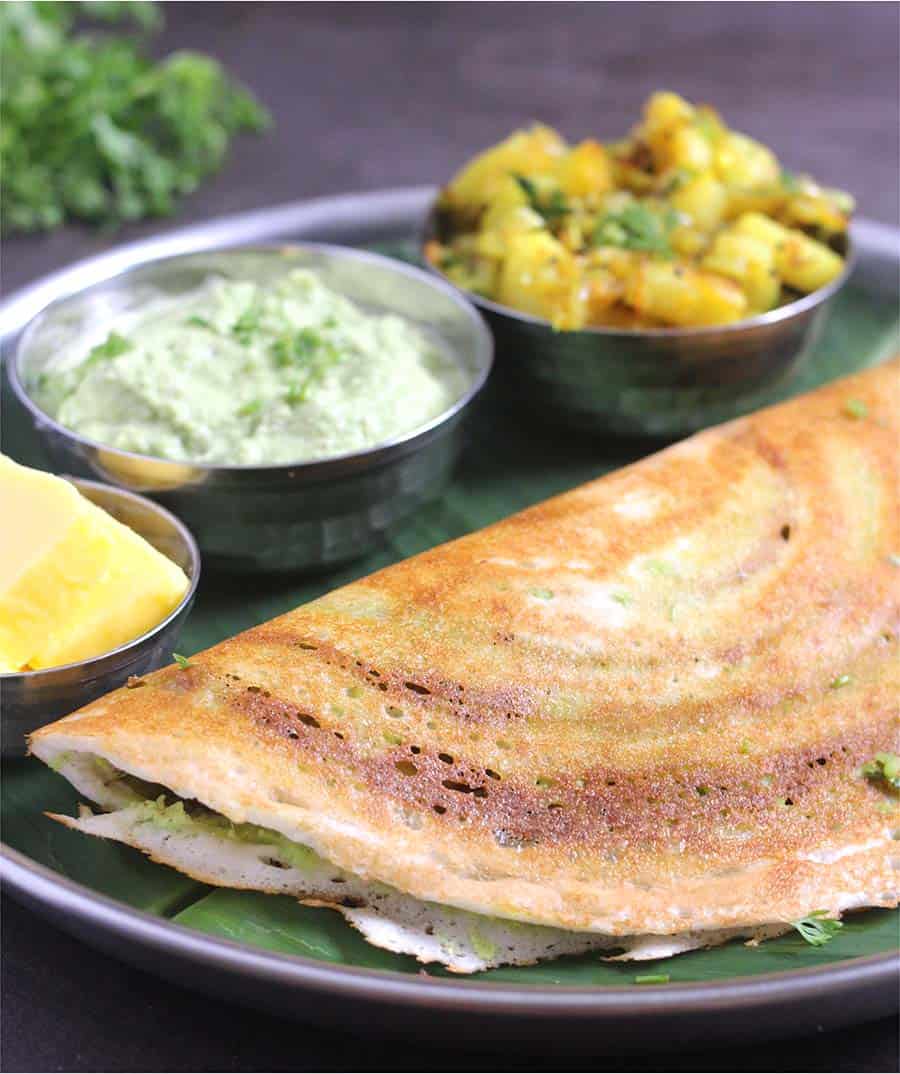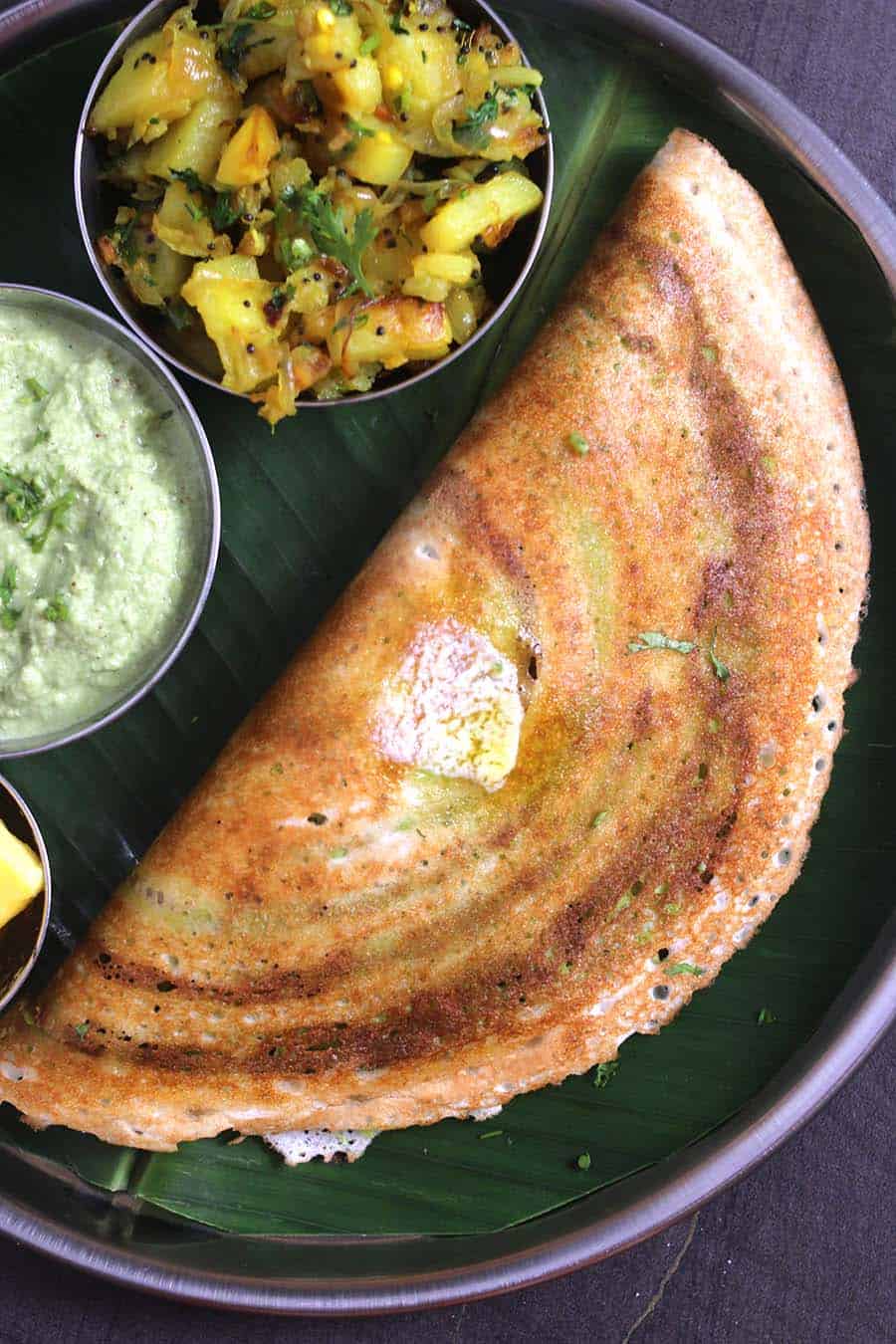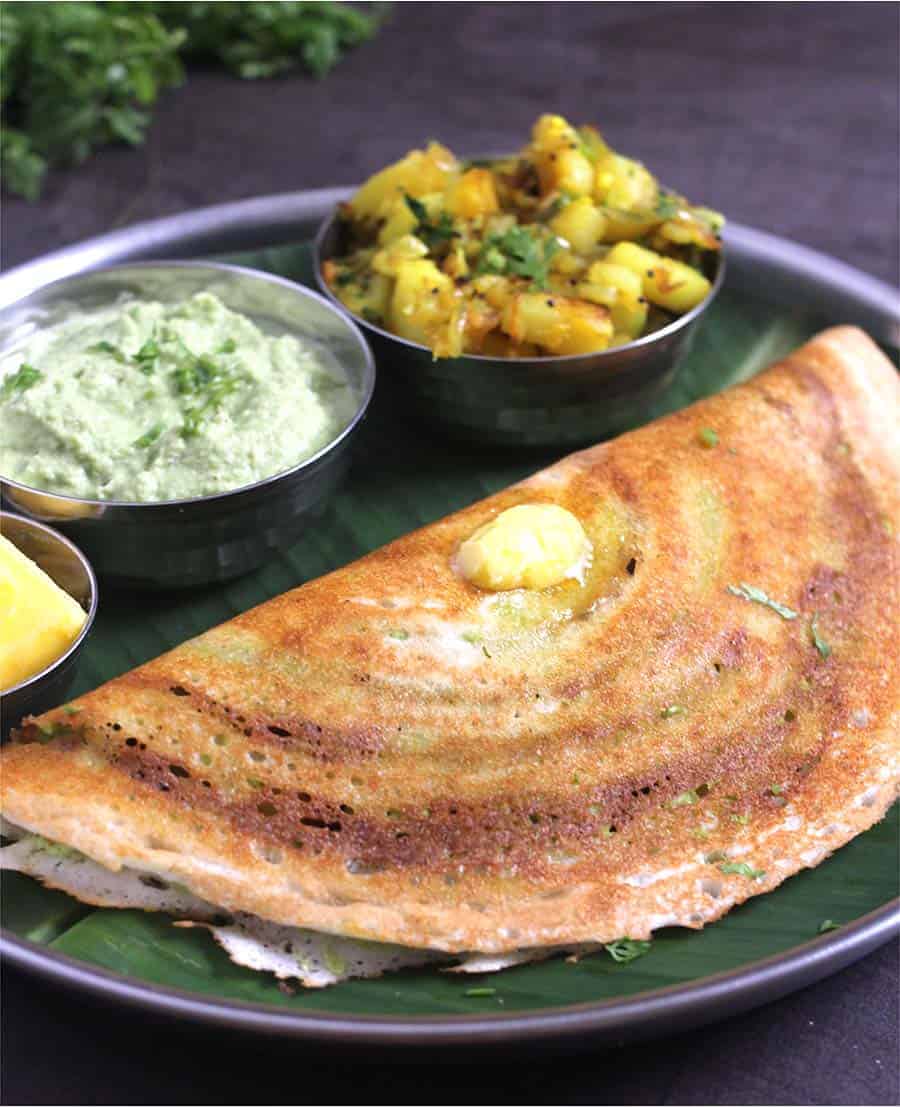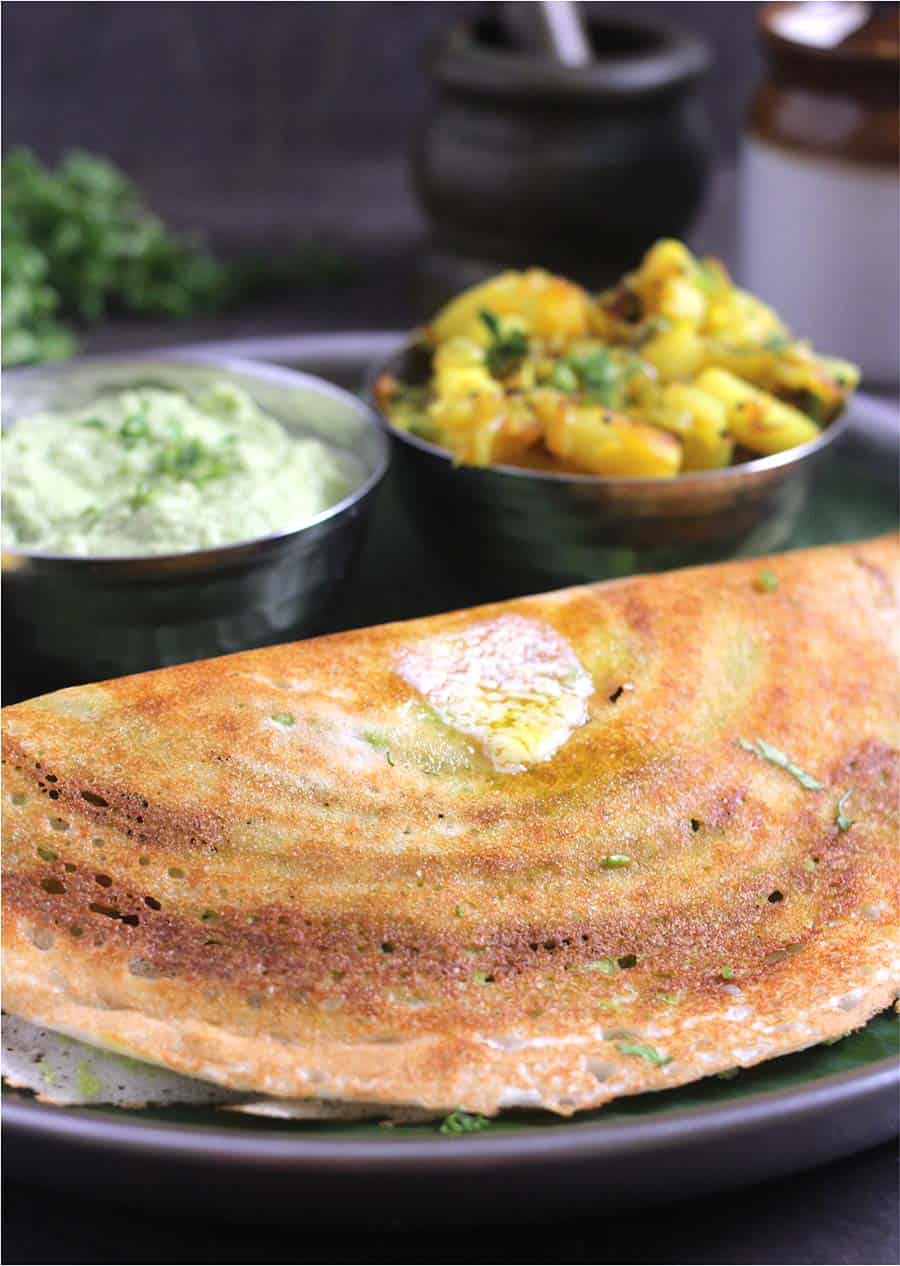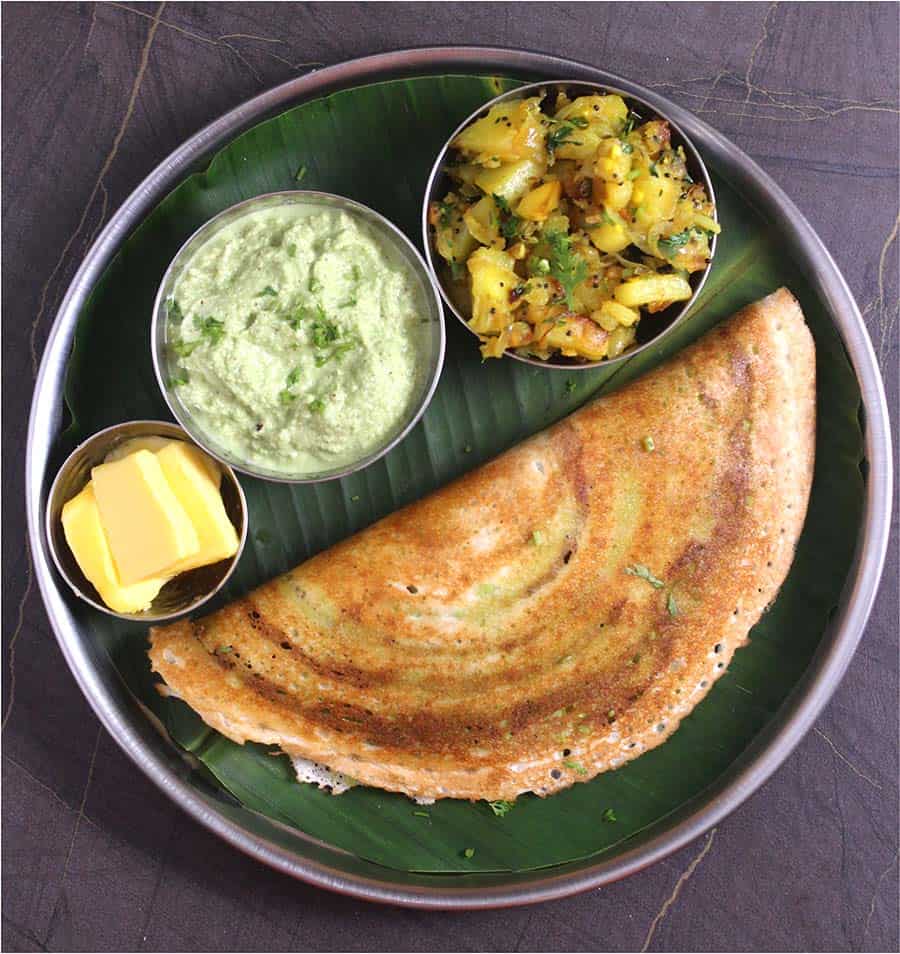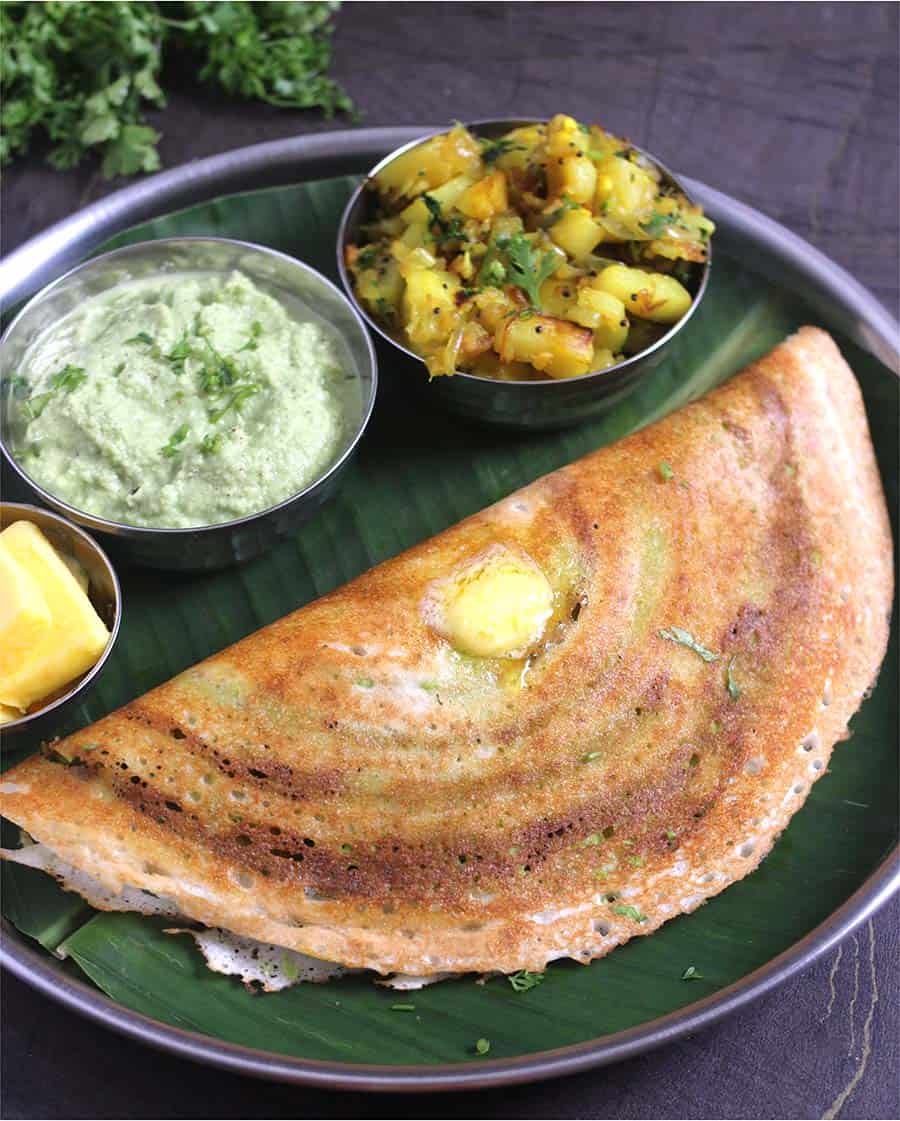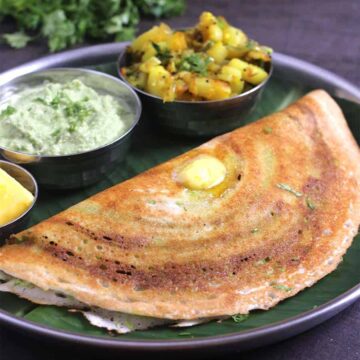I had prepared this dosa from scratch when my dad and mom had visited us in the USA for the first time after my marriage. Wow, it has been eight long years since their first visit - time flies fast. They love this dosa so much that they would ask me to prepare it at their home whenever I visited India. Whenever he eats masala dosa anywhere, he calls me immediately and says that the masala dosa he had in our house was the best so far. How can someone love their kids so much? I am blessed to have them as my parents, and that is why they are so special and dear to me. I am sharing my no-secret, easy & straightforward benne masala dosa recipe with all of you. I hope all of you will prepare it in your kitchens and enjoy it with your loved ones!
Davanagere benne masala dosa is a protein-packed, filling, aromatic, and irresistibly delicious South Indian breakfast recipe. The dosa batter is prepared using soaked lentil and rice and some poha. The batter is fermented and served with a smear of spicy chutney and filled with spicy potato masala, bhaji, or palya. This batter is slightly different from other dosa batter. We use rice, urad dal, poha, methi, and rice flour in this batter. Try this recipe, and you will never miss hotel or restaurant-style dosa ever, and I bet you will prepare it at home again and again.
Masala, also known as dosa masala, or aloo masala is a stuffing or a side dish prepared mainly using potato and onion as main ingredients and cooked with simple spices. If you eat in moderation, anything is healthy. Homemade benne masala dosas are definitely more nutritious and, if done right, tastier than the restaurant ones. This is because you have control of the quality of ingredients and the amount of oil and butter added during its preparation.
Ingredients for Benne Masala Dosa or Butter Masala Dosa
2 ½ cups Raw rice or Idli rice or Dosa rice 1 cup Urad dal ¼ teaspoon Methi or Fenugreek seeds ½ cup Thick poha or Jada poha ½ cup Rice flour 1 to 2 tablespoon Oil 1 teaspoon Mustard seeds 1 teaspoon Urad dal 1 sprig Curry leaves ¼ teaspoon Turmeric powder 6 to 8 Garlic cloves, finely chopped 1 tablespoon Ginger, chopped 2 Green chilies, chopped 3 Onions, chopped lengthwise 3 Potatoes, cut into small cubes 2 tablespoon Cilantro or Coriander leaves, chopped ½ teaspoon Salt, adjust to taste 1 cup Coconut, grated ¼ cup Coriander leaves 3 Green chilies 3 Garlic cloves 1 inch Ginger, sliced 1 Onion, small cut into cubes 1 to 2 tablespoon Cashew ½ teaspoon Salt, adjust to taste
How to make Butter Masala Dosa or Davangere Benne Masala Dosa?
In a bowl, add urad dal, rice, methi. Wash a couple of times, then soak in clean water for 2 hours. After two hours, take poha in another bowl and wash once or twice. Drain and keep it aside. Depending on the size of your mixer jar or blender, add soaked and drained rice-dal mixture and poha in batches. And then blend it to a smooth paste. While grinding, do not add all water at once. The best practice is to add water little by little. Transfer the batter to a bowl. To this, add rice flour and mix well. Cover and ferment it for 6 hours or overnight. Are you interested to know more about the fermentation process? You can check out my post here on DOSA BATTER FERMENTATION. Once the batter is fermented, you can keep it in the refrigerator until you are ready.
(all these names refer to the same masala) In a pan, add oil. Once hot, add mustard seeds. When they start to splutter, add urad dal and curry leaves. When urad dal becomes light in color, add garlic and saute for a few seconds. Next, add onion, garlic, ginger, turmeric, salt and saute for a minute. To this, add potato cubes and mix. Cover and cook on a medium flame for 8 to 10 minutes or until potatoes are cooked through. You can lightly mash a few potatoes using the spatula if needed. It is optional. To this, add coriander leaves and mix well. Switch off the flame. In your mixie jar or blender, add all the ingredients mentioned under chutney with very little water (we want a medium-thick chutney to spread on the dosa). Transfer this to a bowl. Keep this aside. Heat dosa tawa or pan on medium flame. If using a cast-iron pan, lightly apply some oil and wipe off excess grease using a kitchen towel or tissue. If using a nonstick tawa or pan don’t grease. Add salt to dosa batter and mix well. If the batter is thick, add little water. Check the video here for the right dosa batter consistency. Once the pan is hot, take a ladle full of batter and spread it in a circular motion as thin as possible. Add dollops of butter and spread them around the dosa. Once you see those crispy golden spots, spread 1 or 2 teaspoon of chutney. Then spread potato bhaji on one half of the dosa and flip over the remaining half. Serve hot and enjoy.
Yes, yes, yes! I have been using a nonstick pan to prepare crispy dosas for a long time now. You don’t need to buy a cast-iron pan. As mentioned in the recipe, making the correct dosa batter, fermenting, and cooking the dosa at the right temperature with a good amount of fat, especially ghee or butter, will give you crispy dosa and that golden color. If you have any doubt regarding preparation, fermenting, and storing dosa batter or anything and everything related to dosa, check out this helpful guide for beginners. Your dosa batter will clump if your pan is hotter than needed. In this case, bring down the temperature and try to spread again. Another reason would be that your dosa batter is very thick. In this case, add a little water to your batter and mix, and try spreading again. Finally, if there is excess grease on the pan, the batter may clump up and not spread evenly. So make sure to wipe off excess oil using a clean kitchen towel or a tissue. You may have added too much water to the batter. In this case, your dosas will turn soft. Add rice flour and adjust consistency as you see in the video.
Dosa rice is preferred while making dosa. In India, parboiled rice is used along with dosa rice while making dosas, but I hear that not all parboiled rice gives a successful result. My family and relatives tell me sona masuri and ponni work out well. You can also use regular long-grain white rice that you get at Walmart, Trader Joe’s, etc.
Always place your dosa tawa on the largest burner so that the heat spreads uniformly around the pan and the dosas get cooked perfectly. If using a nonstick pan, you do not have to grease the pan. But if you are using a cast-iron pan, please make sure you grease and wipe off excess oil before spreading the batter - else, the batter will stick to the pan or ladle. I generally do not soak anything separately while making dosas. I feel it is not needed if you have a powerful mixer or blender. You can ferment the batter on your kitchen countertop at room temperature or in your instant pot in yogurt mode. If you have any leftover batter, you can make appe or paniyaram, uttappa, etc. I have prepared APPE 65 using the same batter. Today, I have used thick poha or jada poha. If using thin poha, I recommend doubling the amount - i.e., 1 cup in this recipe. Any leftover batter can be stored in the refrigerator and used for 3 to 5 days. To make the batter flavorful, one of the flour is used. I prefer rice flour. You can even use semolina or maida or sabudana flour if needed.
Recipe card
For more recent updates, follow me on Pinterest, Instagram, and Twitter. Click below to save it on Pinterest
